#Outsource Structural Engineering Firm Birmingham
Explore tagged Tumblr posts
Text
Get the Top Structural CAD and BIM Services in Birmingham, UK

Silicon EC UK Limited offers comprehensive Structural CAD and BIM Services in Birmingham, UK, catering to a diverse range of clients across various AEC industries. Our engineering team of skilled professionals utilizes the latest CAD and BIM technologies to deliver precise and efficient structural designs, ensuring optimal functionality, safety, and sustainability of the built environment. Our collaborative approach allows us to seamlessly integrate with your existing workflow, providing timely deliverables and fostering seamless communication throughout the structured project lifecycle.
By choosing Silicon EC UK Limited for your Structural CAD and BIM requirements in Birmingham, UK, you can expect superior quality, timely delivery, and exceptional service that aligns with your project goals and objectives. Contact us today to discuss your project needs and let us be your trusted partner in transforming visions into reality.
For More Details Visit our Website:
#Structural CAD & BIM Service#Structural Design#Structural 2D and 3D Designing#Structural Plan#Structural Engineering Services#Structural Engineering CAD Design Services#Structural Engineering Consultant#Outsource Structural Engineering Firm Birmingham#Structural Engineering Company#Structural BIM Modeling Services#Structural BIM Services#Structural Steel Detailing Services#Structural Modeling Services#Revit Structural Design Services#Building Structural Design Services#Structural Engineering Company Birmingham#Structural Engineering Firm Birmingham#Structural CAD and BIM Services Birmingham#CAD Design#CAD Drafting#CAD Drawing#CAD Services#Engineering Services
0 notes
Photo
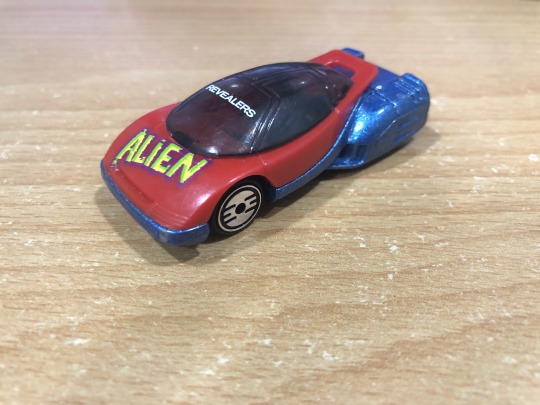
That Time Forgot: IAD Alien (and related concepts)
I gotta admit. For the longest time, I thought that this car, with its supremely space-age design, was not real. But after a bit of a search and some other things... I found it was. I believe some people might share this sentiment. Today, I’m going to talk about the history behind the IAD Alien, along with, as a bonus, all of the other things IAD made over the years.

IAD, or International Automotive Design, was a British design company founded in 1976 by husband and wife Yvonne and John Shute. The company originally designed bodies for trains (my other interest), but eventually branched out to designing bodies for automobiles. Increasing demand eventually caused IAD to branch out to encompassing various different facets of the industry, from design and sculpting models to small-scale production. In the 1980s, IAD was one of the biggest automotive design firms in the world, competing against such giants like Bertone, Italdesign and of course, Pininfarina, and also had multiple facilities around the world.
Touted as “Britain’s Largest Styling Company”, IAD meant business. To prove that they were a force in the industry, they designed a number of concept cars throughout the 1980s to early 1990s, and we’ll be talking about them here. I will not be counting cars that were designed by IAD, but manufactured by another company.
The first of the concept cars they designed was known as the TRX.

The TRX was a radical restyling of the Triumph TR7, designed by Martin Longmore. The TRX attempted to make the car have a completely different appearance, but keeping the fundamental structure of the car as close as possible to the TR7. General Electric Plastics helped to fund the project. It was displayed at the 1980 Birmingham Motor Show.
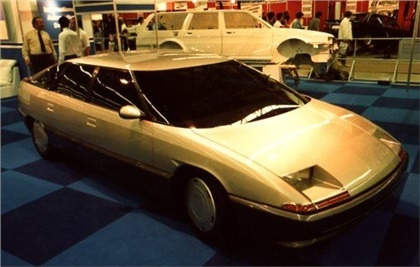
Their next project was the Arrival, displayed at the 1985 Frankfurt Motor Show. The car attempted to demonstrate IAD’s expertise with computer-aided design, showing a proposal for a five-door sedan designed entirely with a computer.

The next car IAD would design would turn out to be arguably their most famous design yet, helped by the fact that a Hot Wheels model was produced replicating the car: the Alien.

The IAD Alien was designed by Longmore and Marcus Hotblack, and was their proposal for a futuristic mid-engined supercar. Featuring a canopy door which tilted forward for unhindered entrance and egress, the Alien showcased a number of interesting solutions for the general public. The car was first introduced at the 1986 Turin Motor Show.

The car itself featured a highly sophisticated interior with a starship-like steering wheel and heads-up display for the dashboard. The interior was also well-protected, with an integrated roll cage in the car. Quite possibly the most interesting part of the car was its modularity; owners of the car could switch out engines on the fly for easy upgrading, maintenance or to change to something else the driver suited. A bit over the top, yes, but that’s what the ‘80s were like.

Unfortunately, the car was non-functional, and Longmore and Hotblack would move on to their next project.
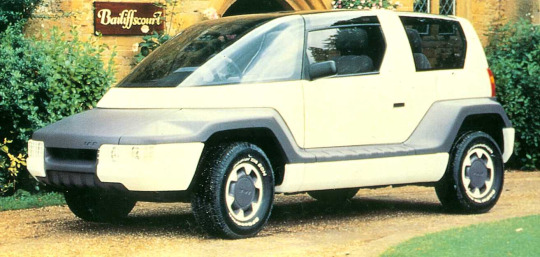
The Impact was their next project, also designed by Longmore and Hotblack. Built on a Ford Sierra chassis and powered by a 2.8L Cologne V6, the Impact aimed to be one of the most barrier-free SUVs possible, with folding steps when any of the doors opened. A split tailgate and underfloor storage allowed the Impact to store more than a usual SUV could. It was branded as a Sports/Utility Car by a brochure, and featured an in-car navigation system. The car was showcased at the 1987 Frankfurt Motor Show.
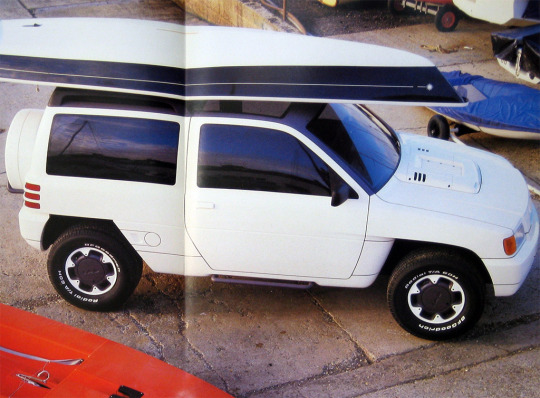
To add to their SUV portfolio, IAD did up the Interstate. Designed by Tony Pettman, the usual Ford Cologne V6 was fitted underneath a soundproof cover, allowing for some of the quietest rides. It too, like the Impact, was introduced at the 1987 Frankfurt Motor Show.

Following up the Impact was the Hunter, a rugged off-road vehicle equipped with navigational systems and a telephone. Appearing very similarly to the Impact, the Hunter was also fitted with the same Ford Cologne V6 and featured weatherproof seats made out of foam. It was showcased at the 1988 Turin Motor Show, and was designed by Longmore, Hotblack and Dave Ancona.

After the Hunter came the Royale, designed by Bill Barranco and Jose Diaz de la Vega. The Royale was built around a highly modified Subaru XT-6, with the wheelbase stretched. Meant for business executives, the Royale had a rotary keypad and controls for the CD player and satnav systems available to both rear passengers. The headlights and taillights were engineered by Phillips (yes, that Phillips), and featured a massive LED screen in the rear of the car integrated with the taillamps engineered to give various pieces of road safety information. It, like the Hunter, was also shown off at the 1988 Turin Auto Show.

Their next car was the rather interesting-looking (and potentially rather unsightly) Venus. Introduced at the 1989 Tokyo Motor Show, the Venus was designed by Michael Ani and touted as a futuristic supercar with both performance and a distinctive appearance. The design aimed to form a blend between the technical and aesthetic aspects of the car. A functioning model of the car was eventually built on a Lotus Elise chassis.

Their next project was simply titled the Mini MPV. Powered by a Ford Escort’s CVH 1.9L engine, the Mini MPV could seat six people in three rows. It debuted at the 1990 Turin Motor Show and may have been trialed at Los Angeles International Airport at the time.

Okay, I’m breaking the “outsourced production” rule, but technically this thing was designed by IAD but never produced, so it sort of qualifies. This is the IAD Magia (or Lancia Magia), designed by Ani and Brian Osborn. Featuring the 2.0L FIAT Twin-Cam inline-4 from a Lancia Delta Integrale, the Magia featured a “svelte body” on top of a Lancia Dedra platform, and was touted as “a car to capture the imagination of all the devotees of sporting coupes”. The car was shown off at the 1992 Turin Auto Show, where it was extremely well received, although serial production never materialized.
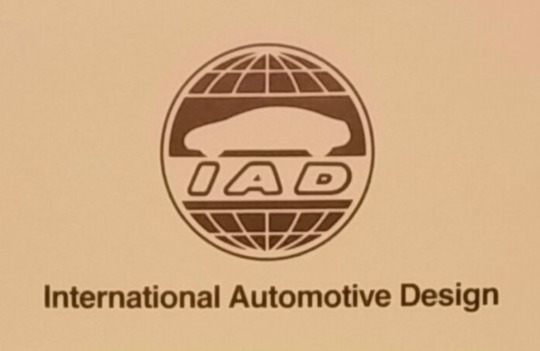
Reeling from the effects of the European Union’s automobile industry’s worst recession, IAD went into receivership and was acquired by Mayflower Group in 1993. John Shute would die two years later on 13 January 1995, aged 54. Despite his death, IAD would go on to design one more concept on their own.

That design was the EuroTaxi. This was a taxi designed to be the cheapest and most efficient taxi to operate by miles. The EuroTaxi attempted to extend service intervals through the use of both an internal combustion engine and an onboard battery pack, and as a result, decrease downtime. The car was showcased at the 1995 Frankfurt Motor Show, but of course, no orders were placed. The EuroTaxi would turn out to be IAD’s last design.

With the money running dry due to said recession, Britain’s Leading Styling Company were forced to release their chokehold on the car design industry and vanished. The company’s design facilities were bought over by Daewoo Motors, and IAD faded into obscurity, never to be heard from again, while Pinifarina, Bertone and Italdesign are still around today, designing cars.
Okay, now that we’ve gotten the history of IAD out of the way, let’s talk about what you came for: the Hot Wheels version of the IAD Alien.

The Alien was designed by Larry Wood and first introduced in the 1989 Speed Fleet series in the above color, somewhat replicating that of the real Alien; however, this color is quite rare and was quickly replaced by the far more common red version. The casting never received any mention of IAD on it; for all its releases it was simply titled “Alien”.

The Alien features a plastic wraparound body rivited to the base, with metal fender flares and a plastic canopy. This canopy can theoretically be removed, but I’m not going to attempt to do so; instead, I’ll show a picture of one with the canopy removed.

The casting has a metal base, which makes this casting quite heavy. It actually has some decent details on the undercarriage.

The base features few markings apart from the logo and copyright information. I can honestly see people not being able to identify this car, but this was at a time where little other information other than copyright and the Hot Wheels logo was placed on the base; this lasted from about the mid-’80s to the mid-to-late-’90s, at which point it was presumably mandated to put the name of the casting on the base unless it couldn’t fit.
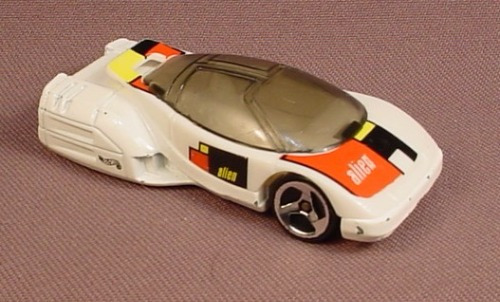
The Alien enjoyed the privilege of being released quite often when it was in the lineup, but ultimately this casting was doomed in 1999 for one reason, and one reason only: the Final Run Series.

The Final Run Series started in 1999 and acted as what I would consider a very glorified funeral for a casting; Hot Wheels would give these cars special tires and paint, in exchange for vowing to never produce them again by cutting their toolings in half. The Alien was unfortunately one of the castings to fall victim to the Final Run Series, and although it might not have been one of the more popular castings to retire that year, it was still retired regardless. As the first batch of cars to be Final Run, having been introduced in the 1999 series, the Alien will never be seen again in the Hot Wheels lineup unless a new tool and die is created for it, which I believe is highly unlikely. The Final Run Series itself has been on hiatus since 2006. In total, the Alien had fifteen releases.

Always on the receiving end of very loud decals due to its plastic sides and large fenders, the Alien will be dearly missed (by me, at least) in the Hot Wheels lineup, and I wouldn’t mind seeing a modern recreation of the Alien return to the Hot Wheels lineup as a premium piece.
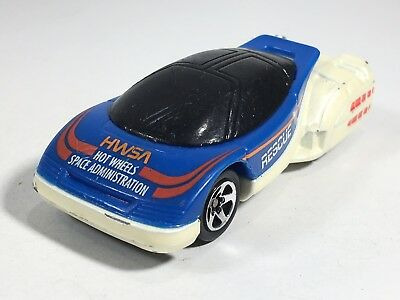
I hope this post has given you a better idea on the history of this futuristic British supercar concept, and the history of its small Hot Wheels counterpart. As usual, I’d write something like this any day.
- Grunty
3 notes
·
View notes